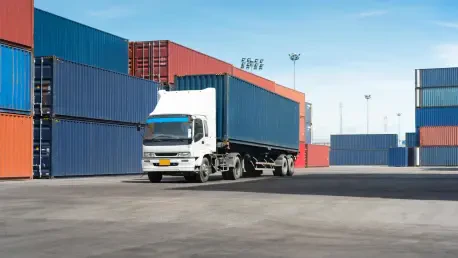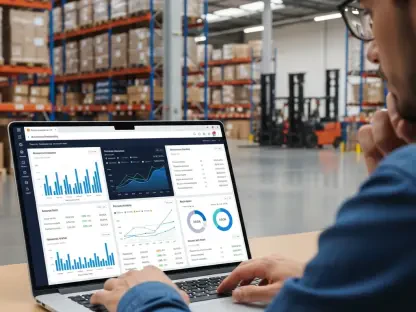The trucking industry stands at a critical juncture this year, grappling with a mix of persistent economic pressures and a wave of unprecedented challenges that threaten to reshape its future, while recent findings from a comprehensive industry report reveal a sector under strain. Stakeholders, from drivers to executives, voice growing concerns about sustainability and adaptability. With economic uncertainty looming large and new issues emerging at a record pace, the report paints a vivid picture of an industry in transition. This analysis, drawn from thousands of diverse perspectives, underscores the urgency for innovative solutions to address both immediate operational hurdles and long-term strategic shifts. As the sector navigates this complex landscape, understanding these challenges becomes essential for ensuring resilience and growth in an ever-evolving market.
Emerging Issues Reshaping the Sector
Unprecedented New Concerns on the Horizon
This year marks a historic moment for the trucking industry, as four new issues have surfaced among the top concerns, the highest number of novel challenges since tracking began in 2005. These include English language proficiency for drivers, the looming diesel emissions regulations set for 2027, driver training standards, and the integration of artificial intelligence in operations. Such an influx of fresh topics highlights the rapid evolution driven by technological advancements, regulatory changes, and shifting workforce dynamics. The data, gathered from over 4,200 stakeholders—including nearly half motor carrier executives, a third professional drivers, and the remainder from suppliers and law enforcement—offers a broad spectrum of insights. This diversity ensures that the findings reflect a comprehensive view of the industry’s current state, capturing both operational and strategic pain points that demand attention in the coming years.
Impact of Technology and Regulation
Beyond the sheer number of new issues, the nature of these challenges signals a deeper transformation within the trucking sector. The integration of artificial intelligence, for instance, raises questions about efficiency and job roles, while the upcoming emissions regulations for 2027 pose significant compliance costs and operational adjustments. Driver training standards and language proficiency requirements further complicate workforce readiness, especially as the industry faces a persistent shortage of qualified personnel. These emerging concerns are not isolated but interconnected, reflecting a broader push toward modernization and sustainability that could redefine industry norms. Stakeholder feedback emphasizes the need for proactive strategies to address these shifts, whether through investment in technology or enhanced training programs, to mitigate risks and capitalize on potential opportunities for growth and innovation.
Persistent Challenges and Economic Pressures
Economic Uncertainty as the Top Worry
For the third consecutive year, economic concerns dominate the trucking industry’s list of critical issues, overshadowing other challenges with their pervasive impact on operations. Stakeholders express deep anxiety over rising operational costs fueled by tariffs, a prolonged freight recession, and the mismatch between supply capacity and fluctuating demand. This consensus spans all respondent groups, from drivers to carrier executives, highlighting a shared fear about the sector’s financial stability. Proposed solutions focus on quantifying these cost impacts, researching the root causes of the recession, and addressing capacity imbalances through data-driven insights. The persistent nature of this issue underscores how macroeconomic factors continue to dictate the industry’s ability to plan and invest, creating a ripple effect that touches every aspect of trucking operations, from pricing to workforce retention.
Divergent Priorities Among Stakeholders
While economic worries unite the industry, specific concerns vary significantly based on stakeholder roles, revealing a nuanced landscape of challenges. Truck drivers prioritize personal and operational issues such as compensation, truck parking shortages, and language proficiency requirements, which directly affect their daily work environment. In contrast, motor carriers focus on broader systemic pressures, including lawsuit abuse reform and the rising costs and availability of insurance, alongside the economy. These differing perspectives illustrate how challenges are experienced uniquely depending on one’s position within the sector. The varied priorities also suggest that solutions must be tailored to address both the granular needs of drivers and the strategic imperatives of carriers, ensuring a balanced approach that supports the industry as a whole while respecting the distinct pressures faced by each group.
Historical Context and Industry Upheaval
Looking at historical trends, the current wave of new issues is reminiscent of a similar period of upheaval in 2012, when three novel concerns emerged, including electronic logging device mandates and driver health initiatives. Today’s environment, marked by market volatility, trade policy shifts, and carrier bankruptcies, mirrors that earlier disruption but on a larger scale with four new topics. This comparison suggests that the trucking industry is once again at a pivotal moment, balancing traditional challenges with modern complexities introduced by regulation and technology. The economic dominance as a recurring theme further ties current struggles to past cycles, yet the introduction of forward-looking issues like artificial intelligence indicates a future-oriented pivot. Understanding this historical context helps frame the urgency of adapting to both cyclical economic pressures and transformative industry trends.
Pathways to Resilience and Adaptation
Building Solutions for Economic Stability
Reflecting on the insights gathered, it became evident that addressing economic concerns required a multifaceted approach grounded in rigorous analysis and collaboration. Efforts to quantify cost impacts and research the freight recession’s causes were prioritized, alongside initiatives to realign supply capacity with demand fluctuations. These strategies, championed by diverse stakeholders, aimed to stabilize the financial foundation of the trucking sector during a period of uncertainty. By focusing on data-driven solutions, the industry sought to mitigate the pervasive anxiety that had gripped carriers and drivers alike, ensuring that operational viability was not compromised by external economic forces. This concerted push for clarity and action marked a critical step toward safeguarding the sector’s long-term health.
Innovating for Emerging Challenges
In tandem with economic remedies, the industry turned its attention to the novel challenges that had emerged, recognizing that innovation was key to navigating this transformative era. Strategies to integrate artificial intelligence and meet stringent emissions regulations by 2027 were developed, alongside enhanced driver training and language proficiency programs. These initiatives, spurred by stakeholder consensus, aimed to position the trucking sector at the forefront of technological and regulatory adaptation. By embracing these forward-looking solutions, the industry hoped to turn potential obstacles into opportunities for growth and efficiency. Moving forward, continued dialogue and investment in these areas will be essential to ensure that the sector not only survives but thrives amid rapid change, setting a precedent for resilience in the face of evolving demands.









